You check your analytics and see dozens of customers adding products to carts, but not completing the order. Some drop off before reaching checkout. Others disappear at the payment stage. Same result: no sale.
So what’s the difference between abandoned cart vs abandoned checkout? And why does it matter?
| What you’ll learn from this article: ● What does abandoned cart and abandoned checkout mean ● Abandoned cart vs abandoned checkout ● Abandoned Checkout stats in 2025 ● Practical tips to reduce checkout abandonment and win back lost sales |
When a customer goes to a website and adds one or more items to a cart but then departs before ever initiating the checkout, it is called an abandoned cart. This implies that shoppers never entered their email, address, or payment details; they just browsed around, added to their wishlist, and then left.
On such a basis, cart abandonment is due to little intention to buy. A shopper might be just window shopping, comparing prices, or saving items for later. It is a drop-off point right in the early stages of the buying experience, and while common, it does tell a lot about the user experience on your shop and the appeal of your products.
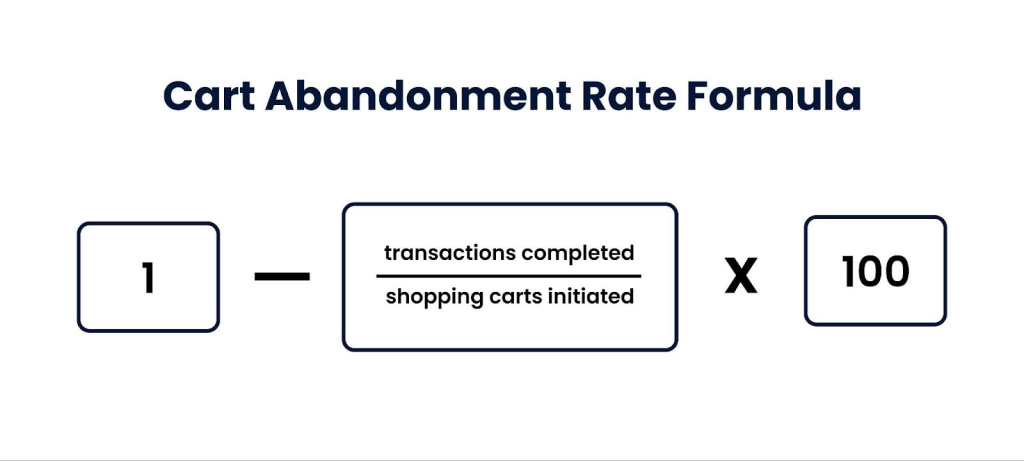
An abandoned checkout happens when a customer begins checking out but leaves before completing the purchase. These customers actually enter the checkout flow, providing their email or shipping address, lock in the payment page, but exit without clicking “Complete Order”.
Higher purchase intent exists with an abandoned checkout compared to cart abandonment. Customers here are usually one step away from converting but are blocked during the last stage by issues such as unexpected costs, lack of payment options, slow loading time, or second thoughts. That makes checkout abandonment a stronger signal and a bigger opportunity to recover.
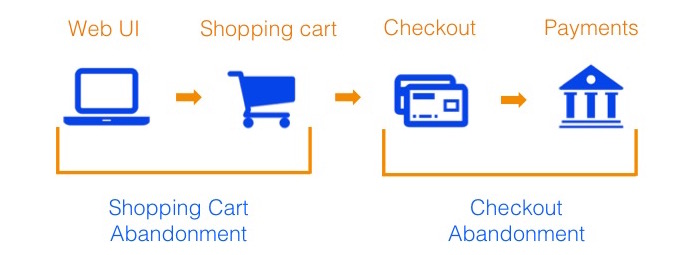
Recent research by the Baymard Institute shows that many customers abandon their purchases due to various issues during checkout. These include confusing form fields, unexpected costs, payment errors, or simply not feeling confident enough to complete the transaction.
A chart or infographic can be placed here to illustrate the top reasons for abandonment.
Meanwhile, 451 Research reports that 1 in 4 shoppers would stop buying from a brand altogether if their payment is declined despite having sufficient funds. The same study revealed that $20.1 billion in sales were lost in 2021 because merchants failed to offer the customer’s preferred payment methods.
Baymard also estimates that poor checkout experiences in the US and EU lead to $260 billion in recoverable lost sales. With improved checkout design, large eCommerce sites could potentially boost their conversion rates by as much as 26%.
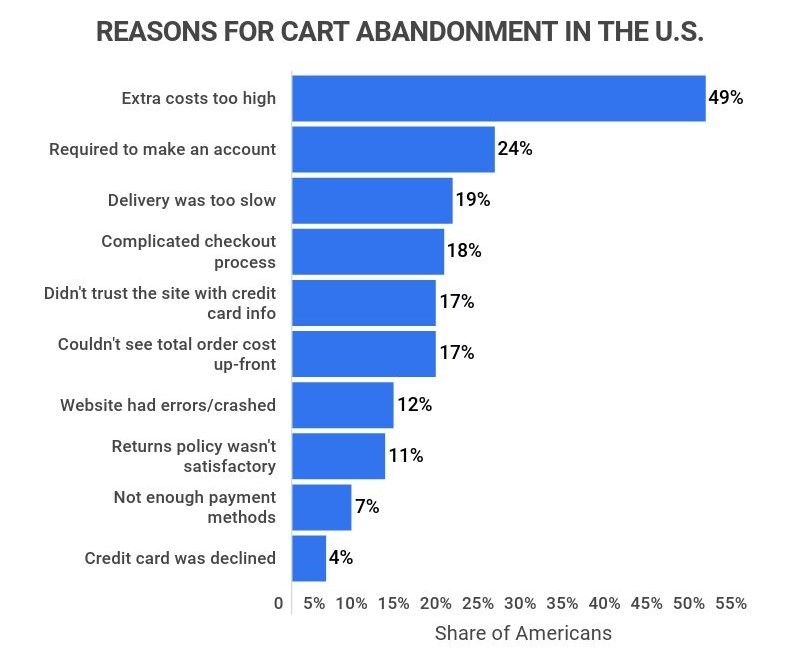
Additionally, studies show that cart abandonment is higher on mobile (85.65%) compared to desktop (69.75%) and tablets (80.74%), underscoring the importance of a mobile-friendly checkout experience.
Although they might sound similar, abandoned cart and abandoned checkout represent two different stages of the customer journey. Understanding the distinction helps you create more targeted and effective recovery strategies.
Understanding the United States of America at which level in the funnel abandonment occurs truly signifies the creation of the recovery strategy. Besides, one of the abandoned carts may just occur at the very initial step of checkout itself. This would generally mean the customer has ended up viewing products from a number of categories, has begrudgingly added one item or more to the cart, and has abandoned the site from either the cart page or while just browsing.
This forms one of the top funnel activities. Users are still in the exploration process and have yet to commit to a sale; so to speak, excitement is there, but not the urgency.
In contrast, a checkout abandonment goes deeper into the funnel. Perhaps the user(s) clicked on the “Checkout,” began filling in their information, even arrived at the payment page, and then backed out: this indicates a serious intention to consider. They were not just browsing; they were ready, but something stopped them at the finish line.
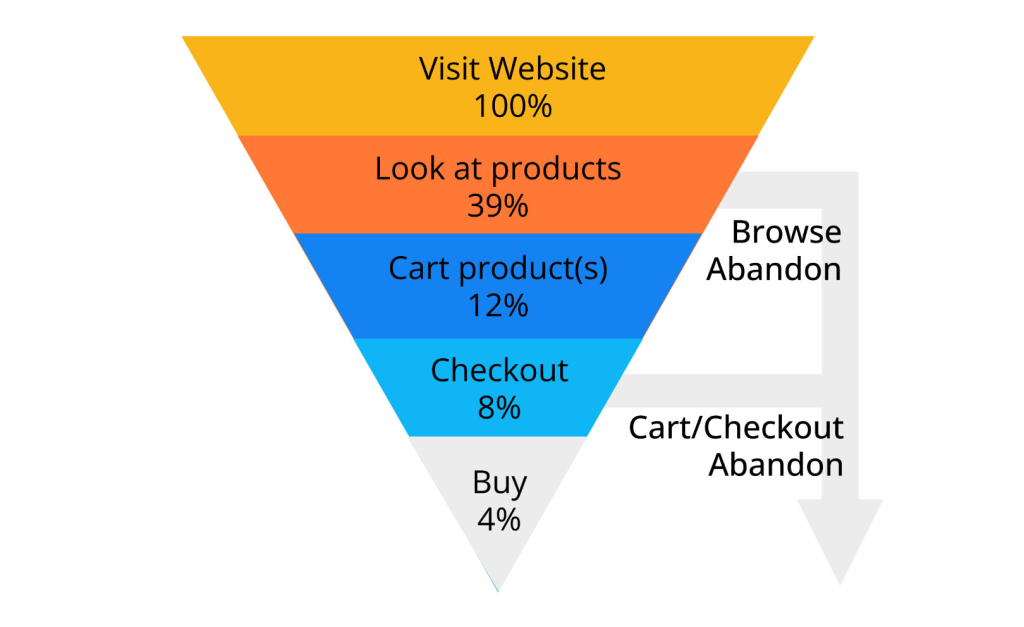
Cart abandonments often indicate hesitations or low urgency to buy; those who abandon their cart may be procrastinating, price-watching, testing shipping rates, or even contemplating another purchase down the road. So, think of their way: We were merely exploring and curious, but unconvinced.
Meanwhile, checkout abandoners have high intent. They’ve crossed the psychological barrier of commitment: providing contact details, address, and sometimes even card information. They’re serious buyers; something small (yet fixable) likely derailed the sale.
As a rule of thumb, the deeper the funnel, the more intent you’re dealing with, and the more important it becomes to have a strong, timely recovery plan in place.
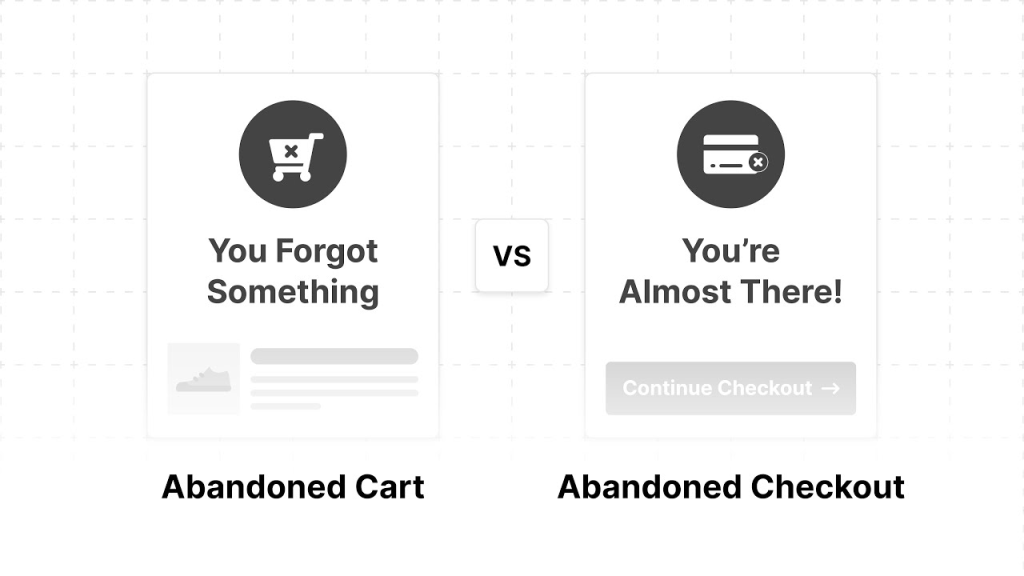
From a marketing and lifecycle standpoint, cart abandoners are more challenging to recover from. You often don’t even get an email address unless they log in. That means there is an overreliance on cookies, retargeting ads, or exit-intent popups, which have conversion rates far below those of direct email offers.
The checkout abandoners are your gold mines. These are the contacts you already have. Most platforms (Shopify, WooCommerce, etc.) capture their email well before the flow ends in checkout, enabling the sending of recovery emails almost instantaneously.
More importantly, these users are often one step away from converting, so even a simple reminder, a small incentive, or payment reassurance can bring them back.
Example: One Shopify Plus merchant overhauled their checkout flow to fix payment errors. Errors that were costing up to $1,000/hour in lost sales and successfully recovered thousands in lost revenue within just 48 hours.
Cart abandonment emails could be triggered via cookie sessions or cart updates associated with a user account and are generally generalized emails: “You left something behind” or “Still thinking it over?” due to an insufficient amount of user data to personalize.
On the upside, checkout abandonment emails pack a much stronger punch. The email is triggered through an actual form submission, so a much higher level of personalization is possible: addresses are personal enough- include their name, show product images, shipping address, discount codes, and create urgency.
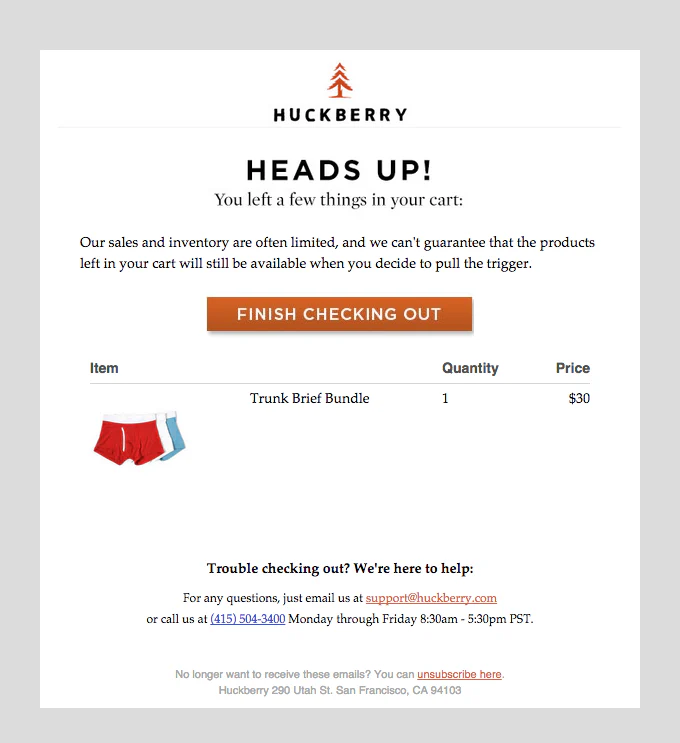
Let’s break it down side-by-side so you can see exactly how abandoned cart and abandoned checkout differ, and why treating them the same could be costing you sales.
| Aspect | Abandoned Cart | Abandoned Checkout |
|---|---|---|
| Funnel Stage | Early-stage: shopper adds items but doesn’t start checkout | Final-stage: shopper enters checkout but exits before completing payment |
| User Intent | Low to medium: browsing, price-checking, no commitment yet | High: ready to buy but stopped by last-minute friction |
| Recovery Potential | Lower: usually no contact info; retargeting reliant | Higher: email captured; can trigger personalized recovery flows |
| Email Triggers | Triggered by session or cart update, limited personalization | Triggered by form input, allows dynamic, tailored messaging |
| Best Channel | Retargeting ads, popups, browser notifications | Email, SMS, urgent incentives |
Checkout abandonment often means you’re losing high-intent customers at the very last step. The good news? You can fix it. Here are five practical tips to reduce checkout drop-off and recover lost revenue effectively.
One of the chief reasons users abandon their purchases is an elaborate or lengthy checkout procedure. Too many required fields, clumsy forms, and unnecessary account creation aggravate prospective customers.
Instead, go for a clean, mobile layout. Enable guest checkout, autofill features, and a progress indicator so shoppers always know where they stand.
Unexpected fees for shipping, taxes, or miscellaneous handling charges can instantly kill a sale. Most shoppers would stop checking out the moment they see the total is more than they had bargained for.
To reduce friction and surprises, display all charges upfront. Ideally, these should appear either on your product page or cart page. Set free shipping thresholds to push buyers into more substantial orders while keeping them engaged.
Not everyone uses the same payment method. If you only support one or two methods, you may lose customers who don’t find their preferred method at checkout.
Make it more flexible by supporting the most widely used ones, or at least those most relevant to your market. Credit Cards, PayPal, Shop Pay, Apple Pay, and local gateways are secure and familiar to users.
If the user entered their email before leaving, you have a powerful chance to bring them back. Email remarketing remains one of the highest-converting recovery tools.
Send follow-up emails within the first hour. Use personalized subject lines, product images, urgency, and even discount codes to re-engage. Don’t stop at one, try a 3-email sequence over 24–72 hours.
Sometimes customers abandon the process because they don’t fully trust the store. If they hesitate to enter payment details, the problem may be a lack of perceived credibility.
Add trust badges (SSL secure, money-back guarantee), display reviews, and show contact or support options clearly. A checkout page that looks safe and legit gives users the confidence to complete their order.
While trust badges help build credibility, real security comes from controlling who accesses your store. Blockify protects your Shopify store from bots, proxies, fake checkouts, and high-risk IPs. Easily block countries, redirect risky traffic, or auto-cancel fraud-prone orders, all with one app.
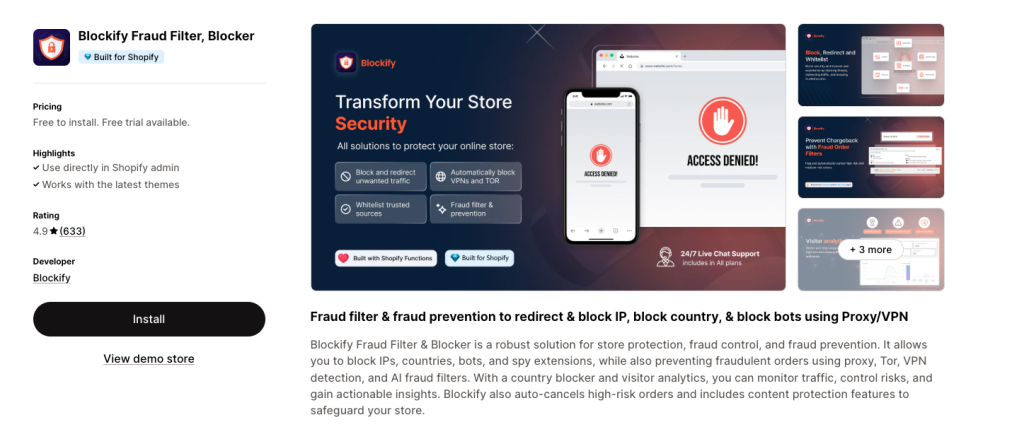
Since mobile cart abandonment rates are significantly higher than desktop, a seamless mobile experience is non-negotiable. Your checkout should adapt to any device, with touch-friendly buttons, easy-to-read fonts, and quick-loading pages.
Responsive design ensures customers can browse and buy smoothly, whether they’re on a phone, tablet, or desktop. Test your checkout across multiple screen sizes to spot and fix any usability issues before they cost you sales.
By leveraging advanced checkout customization and fraud prevention, Blockify Checkout helps Shopify merchants stop revenue leaks before they happen. With flexible payment and shipping rules, plus address validation, you can block fake orders, prevent high-risk checkouts, and streamline the path to purchase.
Blockify’s built-in logic filters out spam and invalid orders while keeping genuine buyers in the flow. Instead of rejecting legitimate customers by mistake, it’s precise targeting ensures smooth transactions and fewer drop-offs.
Merchants using Blockify report significant gains in recovered revenue, up to 15% more conversions, by removing friction for good buyers while keeping threats out.
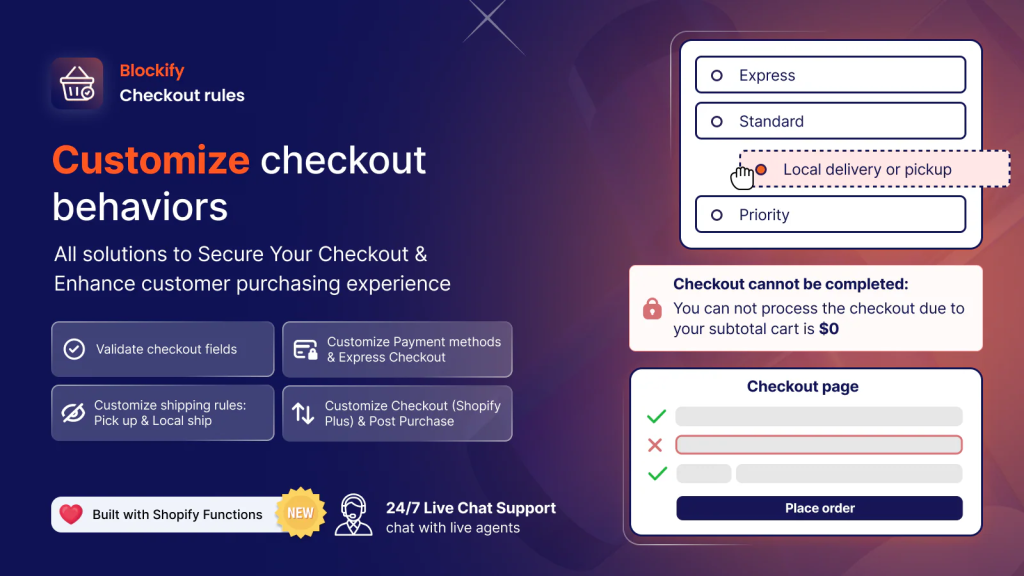
Conclusion
Understanding the difference between abandoned cart vs abandoned checkout is essential if you want to improve your store’s recovery strategy. While both involve lost sales, they happen at different points in the funnel and signal very different levels of user intent.
Shoppers who abandon their carts are often just browsing. In contrast, those who abandon checkout are typically ready to buy but get stopped by friction, confusion, or doubt. By recognizing this distinction, you can create more targeted remarketing flows, improve your checkout UX, and win back more revenue with less effort.